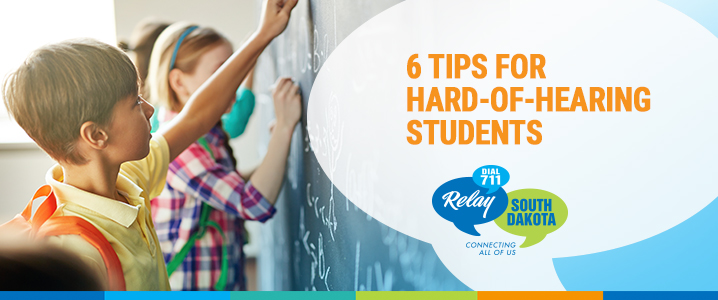
6 Classroom Tips for Hard-of-Hearing Students

Schools are full of noise, from the hallways, to the cafeteria, to the classrooms. But when it comes to hard-of-hearing students, teachers should consider a few methods for making the classroom environment ideal for listening and communicating.
Keep in mind the following tips for making your classroom well-equipped for students with hearing loss.
Seating assignments
One way students and teachers alike can improve the classroom experience for a hard-of-hearing student is to choose seating assignments wisely. Students who have trouble hearing are perhaps best placed toward the front of the classroom in close proximity to the most common place a teacher or assistant might be communicating to the students.
Optimal acoustics
Reverberation and poor acoustics can add extra noise to the classroom setting that may disrupt a hard-of-hearing student’s ability to listen. Consider opting for drapery and carpeting that helps minimize this effect. Cork bulletin boards can also help minimize this extra noise.
Noise pollution
Speaking of unnecessary noise, some of this sound pollution can come from fellow occupants of your classroom. Encourage minimal cross-talk among your students and fellow staff members when you’re lecturing or teaching. This will help your hard-of-hearing student(s) focus in on the lesson more fully.
Lighting
Whether an interpreter is being used or a student is utilizing lip-reading techniques, lighting is a big factor in a positive classroom environment for hard-of-hearing students. Make sure the room is well-lit (and consider swapping out noisy fixtures that buzz or add more noise pollution to the mix).
Handling guests
When you have a guest speaker or a volunteer parent or something of the sort, make sure your guests are aware of the classroom rules regarding noise and optimum communication for your hard-of-hearing students. And to avoid any unwanted attention, have this conversation with your guests ahead of time before class starts.
Assistive devices
Some classrooms might be best equipped with assistive devices, such as FM units, amplified speakers and/or microphones and other items. This might be based on a case-by-case need per each student’s particular hearing level, so broach the subject with parents or the student him or herself.
Sources: Hearing Health Foundation, American Speech-Language-Hearing Association

